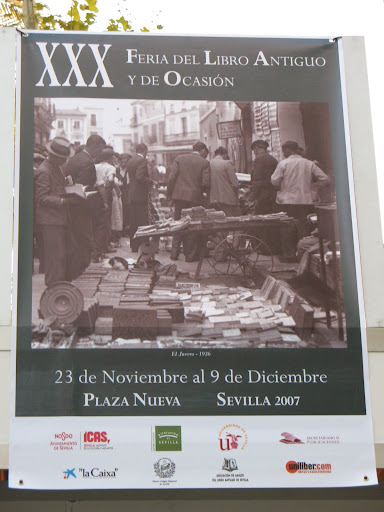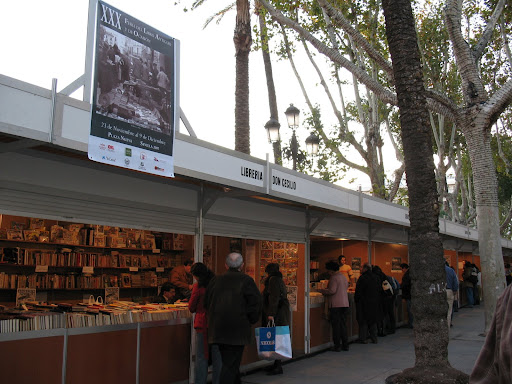

Every year, Smokey has a blast playing with/destroying the wrapping paper. As you can see, he is always alone in his mischief....
Although he does make a mess at times, he still eagerly awaits to see what Santa Claus is going to bring him.















Since we hadn't had the chance to do much traveling yet, Brian and I decided to take off to Córdoba. Just to give you a bit of history, the city was originally occupied by the Romans (like many places in Andalucía), and it later fell to Islamic invaders in AD 711. Córdoba eventually came to be the biggest city in Western Europe, but when the Spanish king Fernando III took it over in 1236, much of its population fled. Today it is still an important city within Spain, and there are still remnants of its Islamic and Roman past. Plus, for the literary savvy, one of the greatest Spanish poets of the Baroque period, Luis de Góngora (1561-1627) was from the city.
While we were there, we first wandered through the narrow streets of the old Jewish district as we made our way to the Alcázar de los Reyes Cristianos, which translates as the fortress of the Christian Kings. Since we were so close by, we then ventured off to see the Roman influence remaining in the city. There is a restored Roman bridge situated on the banks of the Río Guadalquivir as well as a water wheel, which I don’t think has been restored yet.
After all of that walking, we were famished and decided to plop on a nearby park bench to indulge in our picnic lunch that we had prepared in Seville before leaving. With full bellies, we were then ready to tackle the Mezquita (Mosque). It was amazingly beautiful inside because it was a reflection of both Catholicism and Islam. After the Christian Kings conquered the city, they turned the Mosque into a cathedral, so there was a ton of religious paraphernalia made of gold and silver. Brian said that it was the closest thing to the Vatican that he has ever seen so far. Perhaps a trip to Rome is in line…


Brian has been a fabulous house-husband, cooking most of our meals and keeping things clean around the house. From time to time, I like to give him a break and try my hand at some Spanish recipes. This is a picture of our lunch one day. I made a tortilla española, which is basically a Spanish omelet with potatoes, eggs, and onions. The other main dish that I made was stuffed zucchini with ham, tomatoes, and onions then topped with cheese. We also had a white bean salad with red peppers, tomatoes, and onions with an olive oil and vinegar dressing. Then, of course, we had to have fresh cut bread and a flan for dessert.
There is an expression in Spanish which says, “Barriga llena, corazón contento,” which means “Full belly, happy heart.” Mealtime here always brings that old saying to mind!

This is a picture of the Universidad de Sevilla (University of Seville), where I work. Historically, it was the old tobacco factory of the city. This is the main entrance, and the angel at the very top is holding a trumpet. It is said that if she ever were to blow it, then the world would be over. Thankfully, all is quiet on the homefront...

